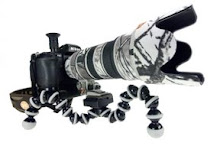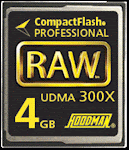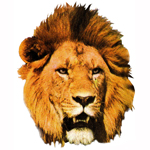Tuesday, 10 June 2014
The SmallHD that wouldnt give up! Adventures in sports action videography!
A lovely autumn day at the footy... This is Northcote Parks home ground...
So my winter weekend job is making video of VFA Football games, particularly of the Northern Football League. Adcell/Red Onion aka Red Vision is my employer, and for now I use their camera, a large shoulder mount Sony camera that also shoots SD.
Why SD? The videos started off by being neutral coaches videos for the clubs, and now the video is uploaded to the Associations website for all to enjoy. Meanwhile, back at the end of game, footage has to be dumped onto a USB stick for the clubs to dissect, the cameras are then picked up and the vids uploaded from Adcell HQ. I'm an exception: I get to keep my camera and do the compression and upload myself. Anyhow with HD, the files are just too big, for example I used one of Canons 3ccd cameras one weekend and the files were 20GB vs 8GB for SD. The 3CCD just couldn't make a small enough file.*
Its a great job, full of challenges and I've really pushed myself to improve my technique.
One thing I got to grips with early on was the shoot-to-print mentality, where my BA Photography and Film training kicked in: every shot is considered, and nothing unnecessary is included.
Early on I noticed that the equipment and operator combo could be a limiting factor, so I set about eliminating that from being a possible excuse for below-standard vision.
Ergonomics, its probably second to safety on my list. Luckily at Crumpler we are blessed with a top notch world class camera support: the Miller Compass 12 fluid head and the matching Solo 2 stage carbon sticks.
Ok so its not the smallest tripod and head combo but the action is so smooth. I run the head flat out on tilt and with either the highest or next highest pan drag.
The Miller in its day job with a Canon DSLR on a red Rock FF rig shooting Crumpler How-to vids.
With director Antuong Nguyen aka SilkyJazz
This requires two pan handles, on the left of which I use the company supplied LANC zoom with fixed but adjustable variability, this is set on around 8 out of 10 for very fast emergency zooming.
Full drag means alot of torque, so I either use a 15kg shot bag or the Pelican case as weight so the tripod won't walk during the massive whip pans required for kicks down, from and to the nearside boundary.
The right side handle mounts a really nice affordable variable LANC zoom with a small thumb knuckle rocker, and both zooms are mounted close to the end of the handles so they dont get hung up on my jacket or vest.
Those are links to the basic product types but shop around of course!
This was last years setup, getting there...
So I'm standing upright, and during setup I make sure the handles are at the height of my elbows: this is sound ergonomic practice as far as I know. If the ground is uneven, then set the camera to suit the lowest point you'd be standing, maybe split the difference a little.
Luckily, with the height of the Sony shoulder mount camera, that leaves the monitor just at the right height so as to still be able to see over the camera, sighting down the handrail for that lost ball in the gloom. Therein lies the bugbear: the built in monitor not only tiny, 2" tiny, its at the other end of the camera on top of the shoulder mount eyepiece! Its quite the challenge.
Oh the glamour! I'm on good terms with my PDR guy: ACE PDR :)
This is my favorite teams home ground: Fitzroy Stars in Northcote.
In this pic you get an idea of the versatility of the Miller Solo sticks: as there is no elevated shooting position the tripod is at full extension, and I'm standing on the cameras Pelican case for the extra height.
More luck: the Sony is bristling with connectivity options: SD, RGB and HDMI.
The plan was to hack an android tablet to use a driverless SD to USB adapter, a project which was born from getting reverse cameras to work with a Google Nexus tablet installed as a nav, virtual gauges and media interface in a car. Great idea but alot of effort for a possibly laggy result, lets just say I'm still working on it, I just need to geek out and root the Lenovo 1000 tablet, I have the hardware adapter and cables ready to go.
I was warned off the various entry level Field Monitors by many of my colleagues, and the Jaycar mini LCD screens were cute but required 12V power and were SD only.
Well if you don't ask, you rarely get so I had the feelers out, all over: BINGO!
I finally got an external monitor for the camera setup and I'll be getting this properly set up over the next week.
My buddy Mick Hurren is a cinematographer and gear head, he dropped his SmallHD DP4 from a moving car onto tarmac = scratched bezel, then plugged it into 12v with wrong polarity = dead power board. I begged it off him to fix it or get it fixed, had a play with and it fired up under USB power! OK...
It works really well via the Sony camera HDMI out and can be powered via a USB emergency power supply or I'll run the Canon EOS battery plate to a DC 12V to 5V USB Buck Module and into the unit FTW.
So that, its sunshade and a mini arm 1/4" to hotshoe plate and I'll have my wish:
elbow level twin pan handles with punch and rocker zoom controls, and an eye level 4" monitor. Now to get it all covered up from the weather!
I'll update this post with my progress...
*As an aside, Mick told me about a method of making old tape cameras future proof by using a CF card capture device: more research required as I really want my own camera ASAP ;)
Sweet joy! The SmallHD DP4 is a sensational little device!
Subscribe to:
Post Comments (Atom)







+(Large).gif)






No comments:
Post a Comment